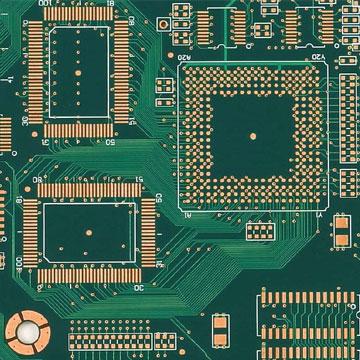The unique benefits of flexible PCBs
Flexible PCBs, as the name suggests, have a level of flexibility that traditional rigid PCBs don't have. It uses a flexible insulating substrate that allows the circuit board to be bent, folded, twisted, and even freely arranged in complex space environments. This feature greatly breaks through the limitations of traditional rigid circuit boards in terms of shape and spatial layout. At the same time, flexible PCBs are also thin and lightweight, which not only helps to reduce the overall weight of electronic products, but also significantly reduces the volume of products, providing strong support for the miniaturization and weight reduction of electronic products. In addition, flexible PCBs can achieve a high degree of integration in the production process, reducing the connection lines between electronic components, thereby improving the reliability and stability of electronic products and reducing the probability of failure.
The application field of flexible PCB in the electronics of the future
Wearables
With the continuous improvement of people's pursuit of health and quality of life, the wearable device market has shown explosive growth. Flexible PCBs are uniquely positioned in the field of wearables. For example, smart bracelets and smart watches need to fit the human wrist, and the flexible PCB can be easily bent into a suitable shape and perfectly integrated with the strap to achieve a thinner and comfortable fit for the device. In smart clothing, flexible PCBs can be sewn between clothing fibers to monitor physiological data such as human heart rate, body temperature, and exercise status, seamlessly combining clothing and electronic devices, opening a new chapter in the integration of fashion and technology. In addition, flexible PCBs can be applied to head-mounted display devices, such as virtual reality (VR) and augmented reality (AR) glasses, to enable devices to better conform to the contours of the head and provide a more comfortable wearing experience, while optimizing the internal circuit layout to improve device performance.
Foldable screen phone
As an innovation hotspot in the mobile phone industry in recent years, flexible PCB plays a key role in folding screen mobile phones. The folding screen mobile phone needs to keep the circuit connection stable during the folding and unfolding process, and the flexibility of the flexible PCB makes it able to withstand multiple folds without damage, ensuring the normal display and touch operation of the screen in different states. With flexible PCBs, various components such as batteries, processors, cameras, and other components inside the phone can be arranged in a compact and flexible manner, enabling the integration of more functions in a limited space. With the continuous maturity and popularization of folding screen technology, the demand for flexible PCBs will continue to grow, promoting the development of the mobile phone industry in a more portable and multi-functional direction.

Figure:The application prospect of flexible PCBs in future electronics
Smart home
The rise of smart home systems makes people's lives more convenient and comfortable. Flexible PCBs have a wide range of applications in smart home devices. For example, in smart home appliances, flexible PCBs can be used to create bendable displays that can be installed on the surface of appliances such as refrigerators and ovens, where users can easily operate the appliances by touching the display, viewing recipes, setting temperatures, and more. In smart lighting systems, flexible PCBs can be made into bendable strips that can be flexibly installed in corners, ceiling edges, furniture interiors, etc., according to different space needs and decoration styles, creating unique lighting effects. In addition, in devices such as smart curtains and smart door locks, flexible PCBs can also give full play to their advantages of thinness, lightness, and flexibility, optimize the internal structure of the device, and improve product performance and user experience.
Medical equipment
In the medical field, there is an increasing demand for miniaturization, portability, and precision of electronic devices, and flexible PCBs meet these needs. For example, in wearable medical monitoring devices, such as portable ECG monitors, blood glucose monitors, etc., flexible PCBs can fit closely with human skin to achieve long-term and accurate physiological data monitoring. In the case of implantable medical devices, flexible PCBs can be made into thinner and softer electrode wires, reducing damage to human tissues and improving the success rate of implantation surgery and the stability of the device. In addition, in medical imaging equipment, flexible PCBs can help optimize the internal circuit layout and improve the imaging quality and performance of the device.
Challenges and prospects
Although flexible PCBs show great potential for future applications in electronics, they also face some challenges. First of all, flexible PCBs are relatively expensive to manufacture, which limits their large-scale application to a certain extent. Secondly, in the long-term bending and folding process, the reliability and durability of flexible PCBs still need to be further improved to ensure the longevity of electronic products. However, with the continuous advancement of science and technology, it is expected that these problems will be solved gradually. Researchers are constantly exploring new materials and manufacturing processes to reduce the manufacturing cost of flexible PCBs while improving their performance and reliability. It is expected that in the future, flexible PCB will be widely used in more fields and become an important force to promote the innovation and development of electronic products.
With its unique advantages such as flexibility, thinness and high integration, flexible PCBs have broad application prospects in various fields of electronic products in the future. From wearables to foldable phones, from smart homes to medical devices, flexible PCBs are breathing new life into the innovation and development of electronic products.






